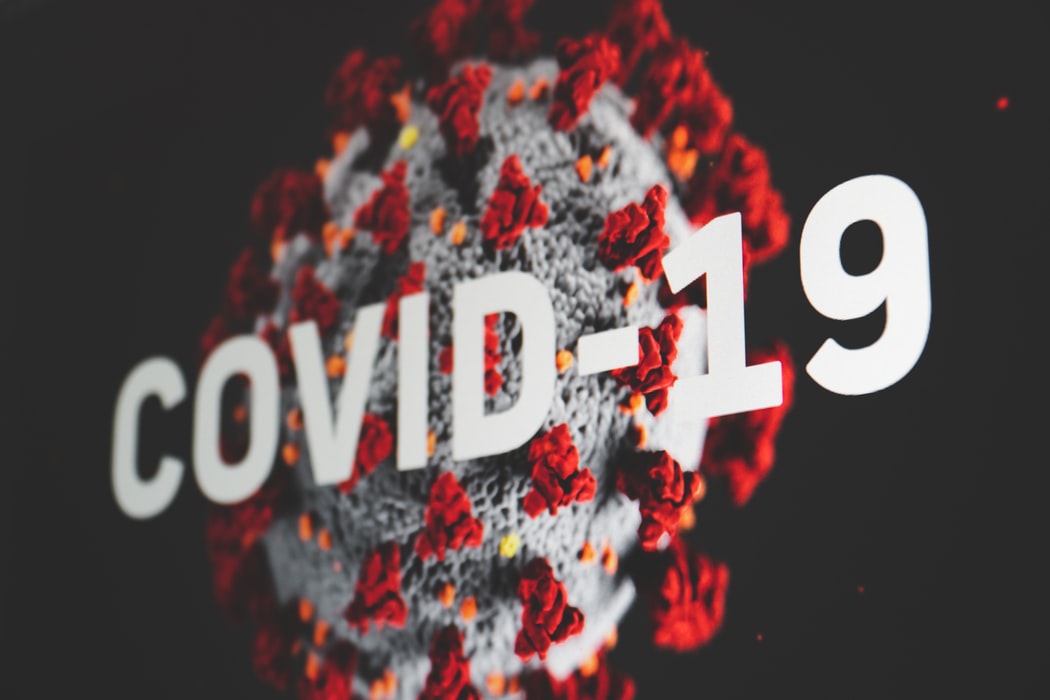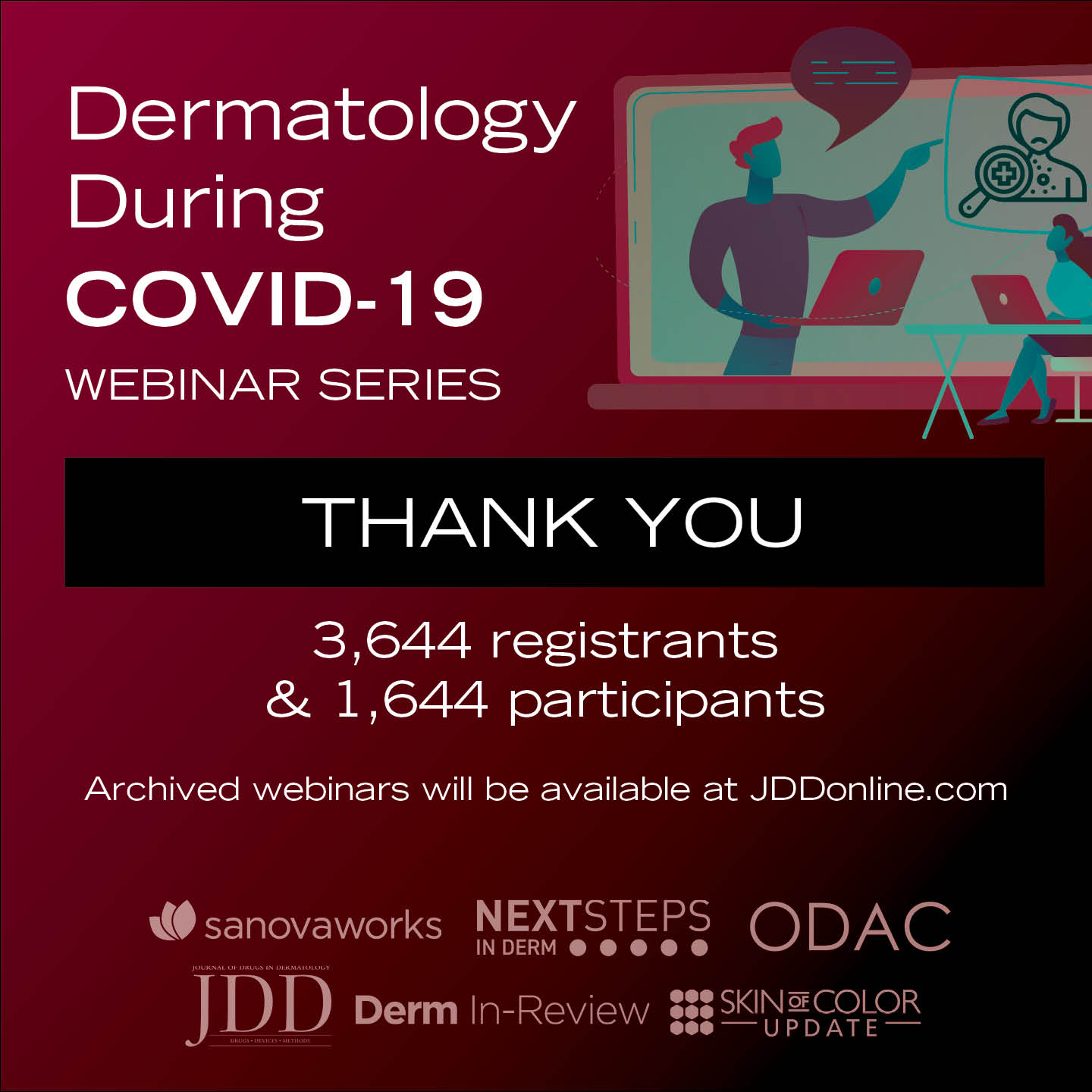According to ODAC Vice-Chair Dr. Joel Cohen, Director of AboutSkin Dermatology (Greenwood Village and Lone Tree, Colorado), and Associate Clinical Professor at the University of California at Irvine, the pendulum is swinging back to heavy resurfacing in areas such as around the mouth and around the eyes that really need it. He uses full-field erbium resurfacing and shares why this is the way to go.
Next Steps in Derm, in partnership with ODAC Dermatology, Aesthetic and Surgical Conference interviewed Drs. Susan Weinkle and Jackie Yee to get their expert opinion on how to train the aesthetic eye. Watch as they share their views from a dermatologist and a plastic surgeon perspective.
National Academy of Dermatology Nurse Practitioners invite you to attend this webinar panel to examine how nurse practitioners and physician assistants can support their employing dermatologist during the global coronavirus pandemic.
Over the course of the 1.5 hours, panelists will join together to provide discussion, guidance and practical steps for supporting your dermatologist and the practice. In addition, panelists will answer the most pressing questions that are on the minds of practitioners impacted by COVID-19.
This panel discussion is part of a webinar series designed to assist NP and PA employed by dermatologists during COVID-19. The previous recordings can be found here.
Moderator:
Debra Shelby, PhD, DNP, FNP-BC, DCNP, FACDNP, FAANP
Managing Member, CEO and Clinical Director: DistinctlyDerm, New Mexico Specialty Medical Services, LLC, Florida Specialty Medical Services, LLC, Dermatology Division and Dermstaffing
Managing member and Co-CEO: CoreMedSource
President, National Academy of Dermatology Nurse Practitioners
Board Director, American College of Dermatology Nurse Practitioners
Panelists:
Ken Greenwood, BSE
Kevin Harrington, APRN, FNP-C
Maria Ann Kolarsick, DNP APN FNP-BC DCNP
Marisa McGeorge, NP-C, CANS
Becky Naughton, MSN, FNP-C, WCC
Debra Shelby, PhD, DNP, FNP-BC, DCNP, FACDNP, FAANP
So many diseases, so few FDA approved indications. Between the mind-numbing time and cost from bench to bottle, it is no surprise that dermatologists, as masters of the integument are the off-label bandits, marrying their wealth of knowledge on the pathophysiology of skin diseases to the mechanisms by which medications work to create an evidenced-based armament of therapies for both common and rare diseases alike. Where a primary care physician sees a blood pressure medication, a dermatologist sees an effective medication for acne. A medication for malaria you say? They use it for a plethora of complex diseases ranging from Lupus to scarring hair loss. The lengthy list of medications used off-label in dermatology continues to grow and for good reason and fortune.
Next Steps in Derm, in partnership with ODAC Dermatology, Aesthetic and Surgical Conference interviewed Dr. Adam Friedman, Professor, Interim Chair of Dermatology, and Residency Program Director at George Washington University, who shared off-label uses of drugs such as Hydroxychloroquine (currently under investigation for the treatment of patients with COVID-19), Pentoxifylline, and Colchicine. A wealth of clinical pearls you don’t want to miss!
Additional video pearls can be found here.
Click here to view the on-demand recordings.
On April, 1, 2020, the Journal of Drugs in Dermatology (JDD) and SanovaWorks brands, including ODAC launched Part I of the webinar series: COVID-19: Urgent Dermatology and Aesthetic Issues for Dermatology.
Over the course of the 2 hours, Joel L. Cohen, MD and 6 different thought leaders joined the COVID-19 conversation, discussing the pressing questions that are on the minds of many dermatologists and providers in the country. The initial broadcast attracted 1,900 registrants and nearly 800 attendees comprised of physicians, residents, fellows, nurse practitioners and physician assistants. Attendees were interested and engaged throughout the entire 2 hours with a 76% average attentiveness and 72% average interest rating.
The on-demand broadcast has attracted over 500 registrants as of April 9th and is available on JDDonline.com.
On April 7, 2020, Part II of the webinar series was broadcasted: COVID-19: Your Questions Answered. Dermatology experts and thought leaders examined the legal and financial concerns of dermatology providers during the global coronavirus pandemic. Experts discussed furlough vs. layoffs; mortgage and rent relief programs; the CARES Act; the pros and cons of leveraging NPs or PAs for teledermatology and more. Then, hear questions answered by our panel of experts; discussed practical tips you can use in your practice right now; and how to move forward with patient care. Part II attracted 1,300 registrants with nearly 700 attendees. Attendees were engaged and interested throughout with an 82% attentiveness average and 75+% interest rating.
The on-demand broadcast of Part II will be available on April 11, 2020 on JDDonline.com.

Source: Journal of Drugs in Dermatology
While the world lives under the shadow of the novel coronavirus (COVID-19) pandemic, dermatologists wonder if the current situation calls for a temporary change in the management of skin conditions.
Immunosuppressive drugs are used ubiquitously in the modern treatment of inflammatory and autoimmune skin diseases like psoriasis, bullous diseases, connective tissue diseases, and many others. Treatment of these conditions is based on the suppression of the patient’s immune system using steroids, steroid-sparing drugs, and biological agents.1
While the effects of the novel coronavirus on the body and its immune system are still being studied, there is overwhelming evidence that the virus could directly or indirectly affect the immune system. In one study, lymphocytopenia was reported in 83.2% of the admitted patients and might be associated with a worse prognosis.2In another study, a steady decline in the lymphocyte counts was recorded in a group of patients who did not survive the infection.3
While the coexisting comorbid medical conditions (such as diabetes or heart disease) are considered as independent predictors of an adverse outcome of the novel coronavirus infection,4 it could be assumed that the chronic inflammatory and autoimmune skin diseases like psoriasis by themselves might imply an additional risk factor of developing more serious symptoms of the novel virus due to their chronicity and effects on the immune system.5
The use of immunosuppressive to treat these conditions can amplify this effect, and it might leave the patient vulnerable to more serious complications should an infection with the novel coronavirus be established. Hence, it may be wise to restrict temporarily the use of immunosuppressive agents including systemic steroids, steroid-sparing agents, and biologics in dermatology daily practice until more evidence is available about their safety in the current pandemic.6As a relates point, the International Psoriasis Council declared an urgent statement on March 11, 2020 that the physician should be alert to the potentially harmful effects of COVID-19 infection on patients with psoriasis and to immediately discontinue or postpone immunosuppressant medications for psoriasis patients diagnosed with COVID-19 disease.7
Clinical photography is a critical tool for the dermatologist and has rapidly become standard of care in the digital era. While a point-and-click approach to photography is sufficient for some circumstances, there are some simple tricks and techniques that will elevate your photography to a new level of professionalism.
Next Steps in Derm, in partnership with ODAC Dermatology, Aesthetic and Surgical Conference interviewed Dr. Justin Finch, Associate Professor of Dermatology at UConn and Co-Founder of Central Connecticut Dermatology who shared his top 3 pearls for improving clinical photography in your practice.



